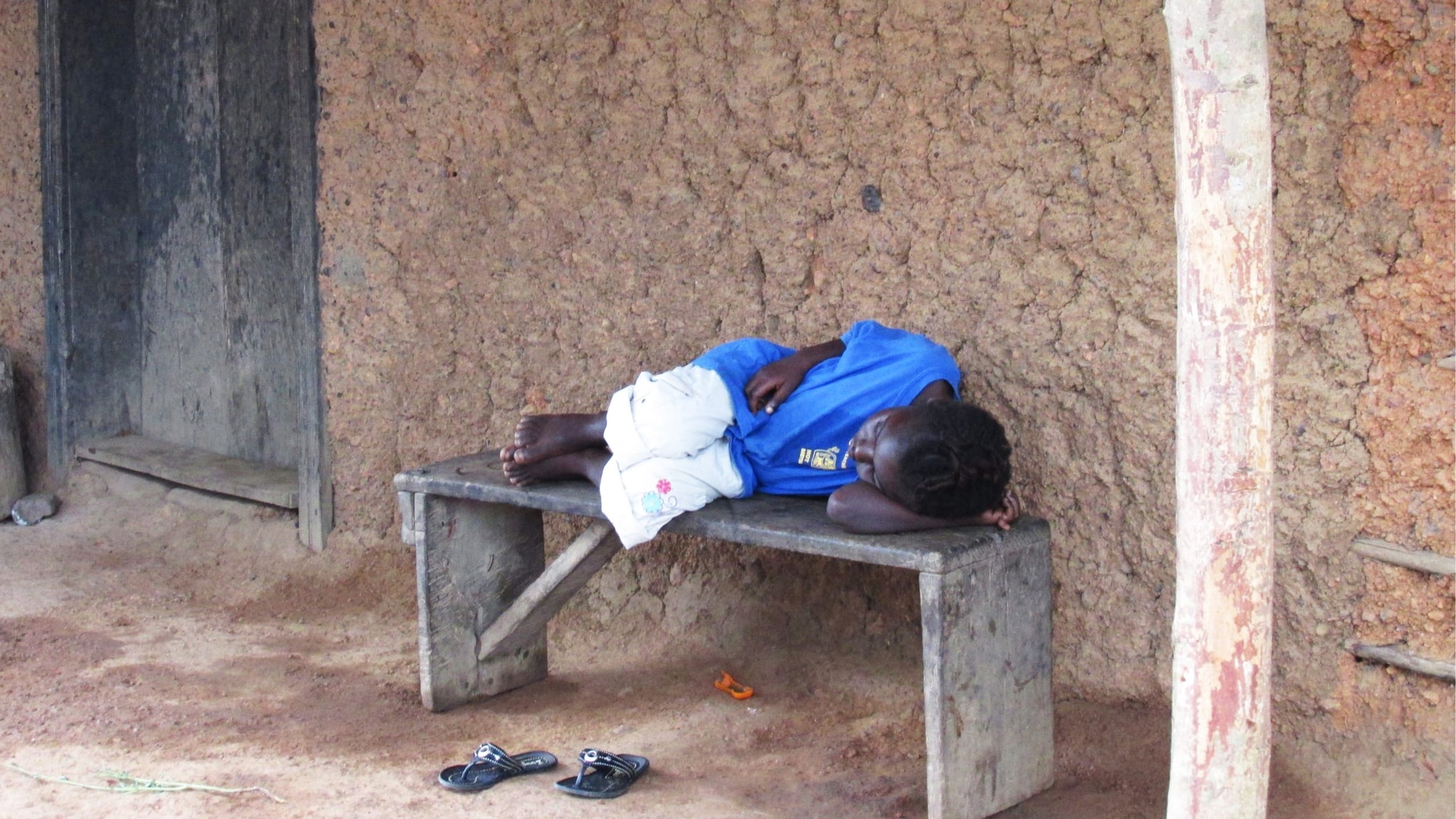Key points
- Ebola disease can be confused with other more common infectious diseases, such as malaria, typhoid fever, meningococcemia, and other bacterial infections.
- Gastrointestinal symptoms, such as severe watery diarrhea, nausea, vomiting, and abdominal pain, may develop after four to five days of illness.
- Bleeding is not universally present in Ebola patients.
Disease presentation
Early stage of disease
Patients with Ebola disease generally have an abrupt onset of fever and symptoms typically 8 to 10 days after exposure. Initial signs and symptoms are nonspecific and may include elevated body temperature or subjective fever, chills, myalgia, and fatigue. These are known as "dry" symptoms.
Malaria is the most common cause of acute undifferentiated fever after travel to sub-Saharan Africa and some other tropical areas. If applicable, follow Clinical Guidance: Malaria Diagnosis & Treatment in the U.S., as diagnostics should be done promptly and treatment instituted immediately. Typhoid fever, meningococcemia, and other bacterial infections, like pneumonia, also have similar nonspecific symptoms and can be confused with Ebola.

Mid-late stage of disease
Four to five days after symptom onset, patients can progress to gastrointestinal symptoms, or "wet" symptoms. "Wet" symptoms can include severe watery diarrhea, nausea, vomiting, and abdominal pain. Other symptoms, such as chest pain, shortness of breath, headache, or confusion, may develop. Patients often have eye irritation and redness. Hiccups have been reported. Seizures may occur, and cerebral edema has been reported.
Bleeding is not universally present. However, it can manifest later in the course of disease as petechiae, ecchymosis or oozing from venipuncture sites, mucosal hemorrhage, or blood in stool or vomitus. In general, unexplained bleeding is reported in 40% of patients.
Patients may develop a mixture of flat and raised lesions on the skin, which are red in color, by days 5 to 7, usually involving the neck, trunk, and arms, that can peel or flake off.
Pregnant women may experience spontaneous miscarriages.
The most common signs and symptoms reported during the 2014–2016 West Africa outbreak include fever (87%), fatigue (76%), vomiting (68%), diarrhea (66%), and loss of appetite (65%).
Patients with fatal disease usually develop more severe clinical signs early during infection and die typically between days 6 and 16 of complications, including multiorgan failure and septic shock (mean of 7.5 days from symptoms onset to death during the 2014-2016 outbreak in West Africa). In nonfatal cases, patients may have fever for several days and improve, typically around day 6. Patients who survive can have a prolonged convalescence.
Clinical assessment
Laboratory findings at admission may include leukopenia, frequently with lymphopenia, followed later by elevated neutrophils and a left shift. Platelet counts often are decreased in the 50,000 to 100,000 range. Amylase may be elevated, reflecting pancreatic involvement (inflammation/infection). Hepatic transaminases are elevated with aspartate aminotransferase (AST) exceeding alanine aminotransferase (ALT); these values may peak at more than 1,000 IU/L. Proteinuria may be present. Prothrombin (PT) and partial thromboplastin times (PTT) are prolonged and fibrin degradation products are elevated, consistent with disseminated intravascular coagulation.
